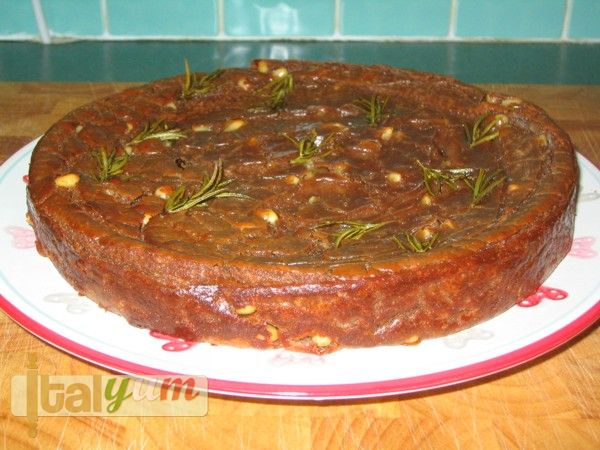
Poor man’s chestnut cake (Castagnaccio)
Castagnaccio is a rustic poor man's cake made with chestnut flour (the Italian for chestnut is castagna). It's a preparation from the Liguria region of Italy. This cake is also very common in nearby Tuscany. It’s not a soft, open textured cake; quite the opposite. It is not as sweet as you would expect for a cake because castagnaccio does not contain sugar (however some people like to dust some icing sugar over the top when it is still hot from the oven). This cake is an acquired taste; the palate will initially experience a subtle bitterness and then the bitterness will be overwhelmed by the sweetness of the chestnut. Like marmite, you will love it or hate it! It's a kaleidoscope of flavours; chestnut, sultanas, pine nuts, olive oil and rosemary. For many centuries it has been considered more like staple food rather than a cake or dessert. Many years ago school kids, especially from the rural areas of Liguria, used to have it for school snack. Even myself, when I was a kid, I used to buy castagnaccio from my local green grocer (fruttivendolo), sold in a square slice wrapped in greased paper. It’s an ideal bite while having a mid-morning coffee or an after lunch espresso, as I usually do.
Equip your kitchen – Available at Amazon now
Clicking on equipment pictures takes you to Amazon where you can buy the items. We get a small revenue share of anything you buy which helps keep the site running.
Ingredients
- 375 grams (13 oz) Chestnut flour (quantity available in the pack)
- 570 grams (1 pint) Water
- 50 grams (2 oz) Extra virgin olive oil (see note below)
- 75 grams Pine nuts (also known as pine kernels)
- 125 grams (5 oz) Sultanas
- A pinch of salt
- A couple of small sprigs of rosemary
Note: use 25 g (1 oz) of the olive oil into the initial batter and the remaining 25 g (1 oz) for the final finish, before putting the cake into the oven.
Instructions
- Soak the sultanas in a small bowl of water, for about an hour. Remove some tiny little sprigs from the main sprig (10 for a mild flavouring, 20 for a strong flavouring).
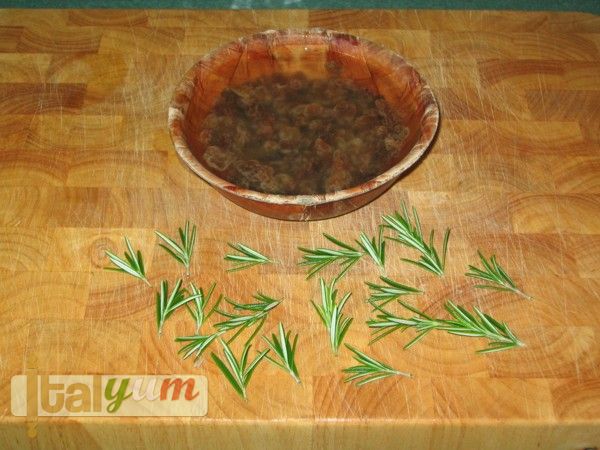
- After one hour soaking in water, drain the sultanas, set aside and discard the water.
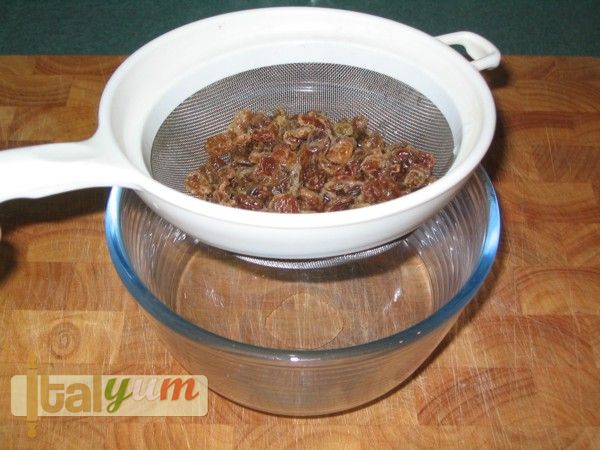
- Add the 570 g of water (1 pint) into a large bowl.

- Add half of the olive oil to the water.

- Add a pinch of salt to the water.

- Start whisking.
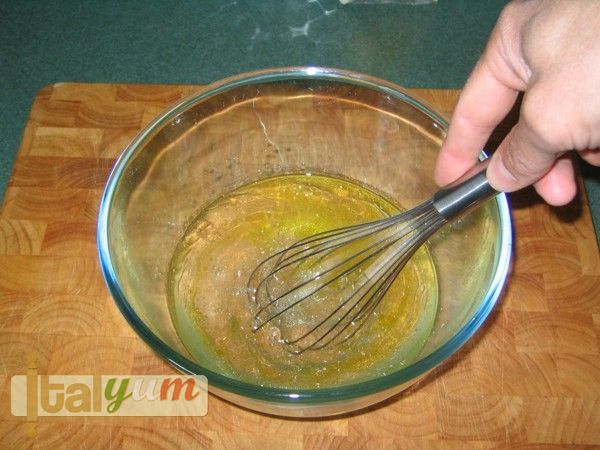
- Slowly, add the flour into the bowl, a bit at a time, while whisking. I have only two hands! one for the bowl and one for the camera; which explains why the whisk is still…..you should be whisking vigorously.

- This pictures shows the stage where I have added about 50% of the flour. I whisk making sure that there is no lumps before adding the remainder of the flour.
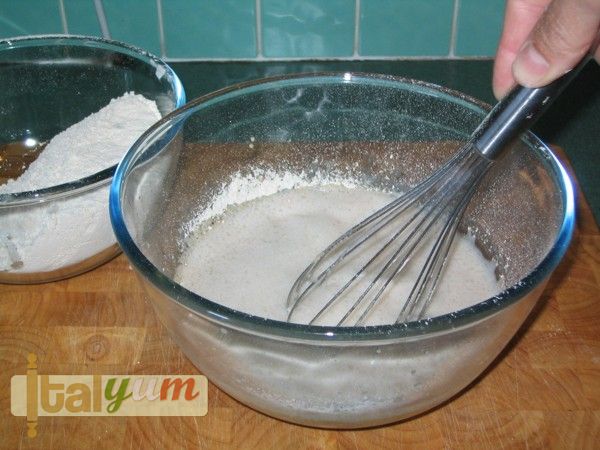
- Now, that all the flour has been added to the bowl, the batter should have reached a medium consistency (not too loose).
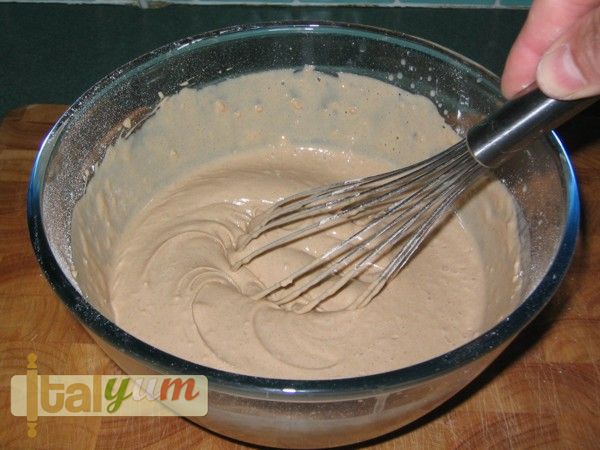
- Next, add the sultanas to the batter.
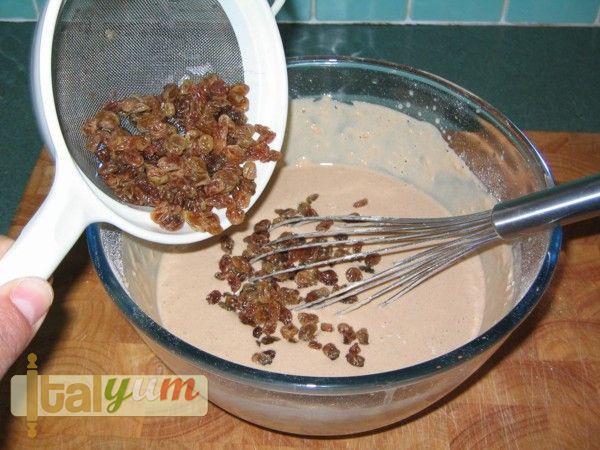
- Then, add the pine nuts to the batter.

- Give the mix a good stir.
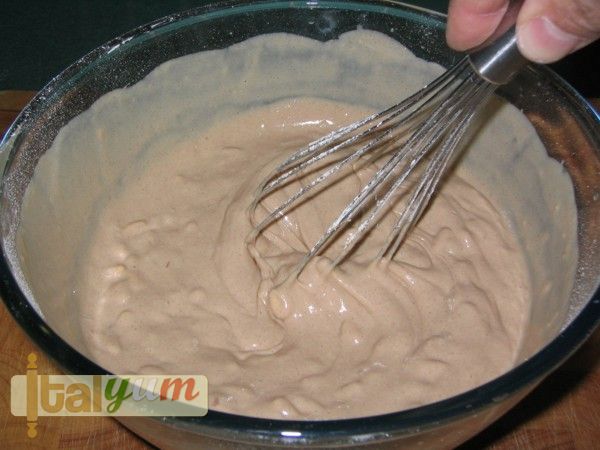
- Coat a cake tin with olive oil. I have used a 22 cm (8 3/4") wide cake tin.

- Pour the mix into the cake tin.
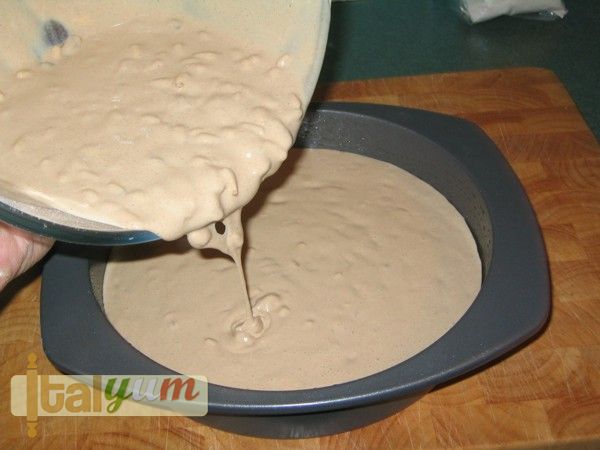
- Leave the mix to level itself for few seconds. Do not bang the tin down against the working surface; it will send the sultanas and the pine nuts to the bottom.
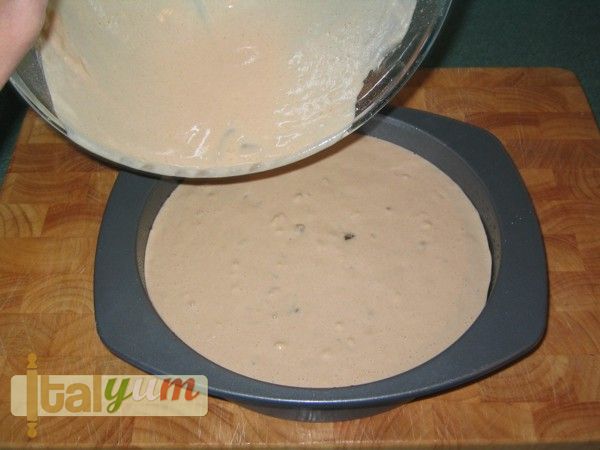
- Scatter the remaining olive oil all around the surface of the mix.
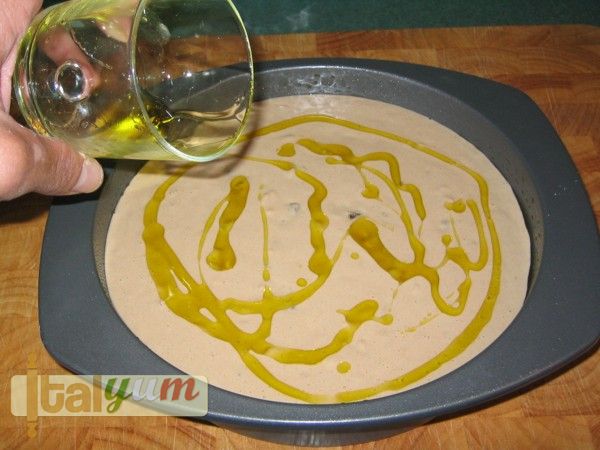
- Place the tiny rosemary sprigs over the surface of the mix.
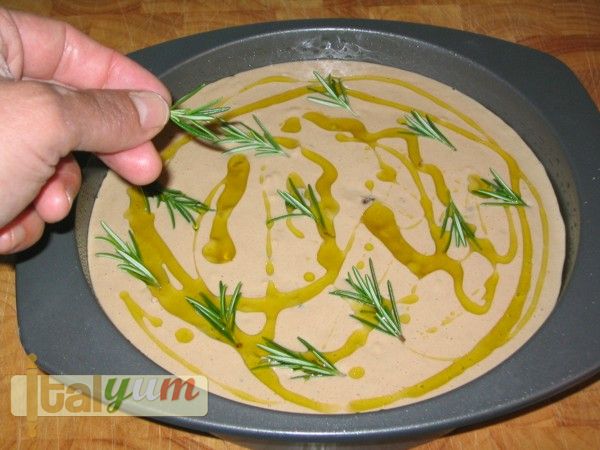
- Place the cake tin into a pre-heated oven and bake for 35 minutes at 190°C (375°F). My oven is fan assisted.

- The castagnaccio is ready. Remove from the oven and transfer it onto a plate.
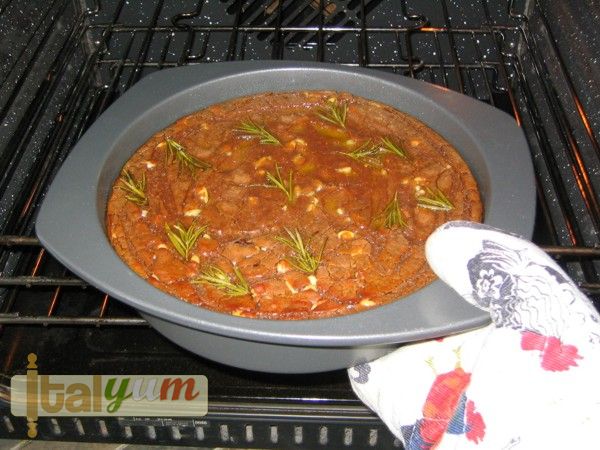
- This is how it looks after the baking.
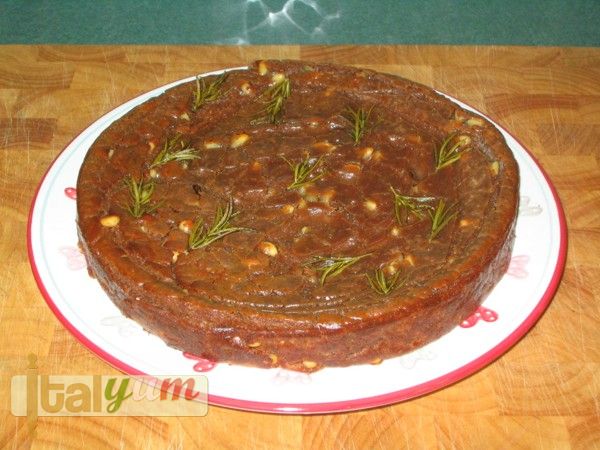
- Have a slice with an espresso coffee.Enjoy!
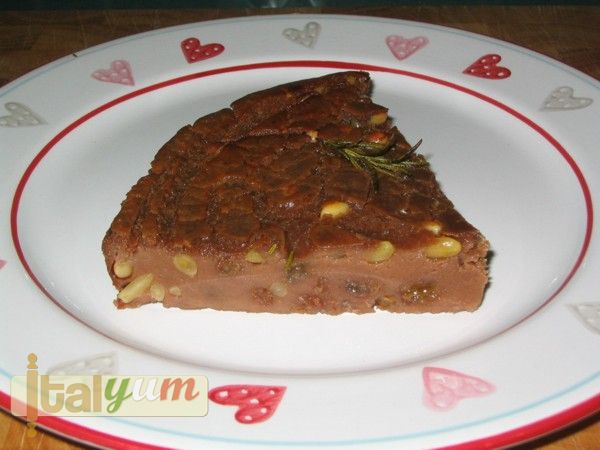
- If you have found it a bit too bitter for your taste, dust the castagnaccio with a bit of icing sugar, but not too much.

Nutrition
Calories: 650kcal
Tried this recipe?Let us know how it was!



